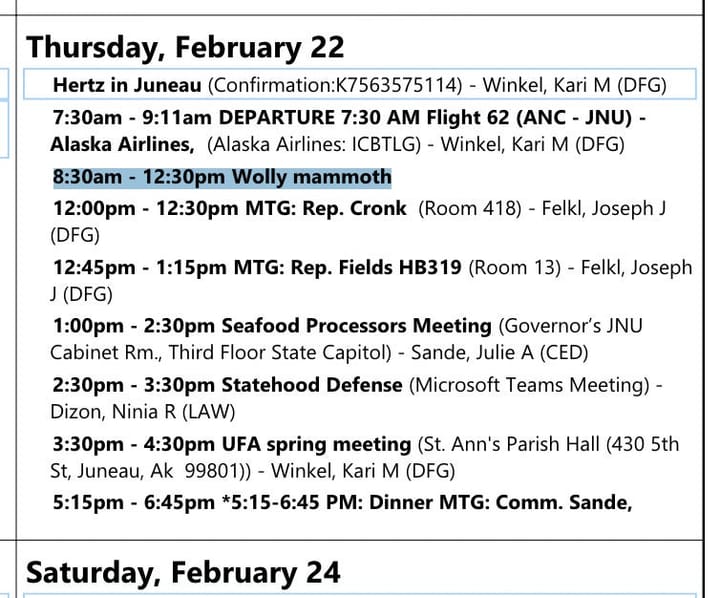Alaska Gov. Dunleavy removes university researcher from energy task force leadership post
GOP Gov. Mike Dunleavy removed Gwen Holdmann, of the Alaska Center for Energy and Power, from her vice chair position on the task force he's established to reduce the state's high electricity prices.

This edition of Northern Journal is sponsored by The Boardroom, a shared workspace in Anchorage. I use their array of comfy and light-filled spaces as an alternative to my home office, and I also enjoy the free kombucha and convenient access to downtown. Check out membership options here.
Northern Journal is a reader-supported publication. To receive new posts and support my work, consider becoming a free or paid subscriber.
Alaska Republican Gov. Mike Dunleavy has removed the university researcher who was helping lead his energy task force.
Gwen Holdmann, a senior researcher at the Alaska Center for Energy and Power and an associate vice chancellor at University of Alaska Fairbanks, was notified earlier this month that she’d been removed from Dunleavy’s Energy Security Task Force, she said in a phone interview.
Her removal came after just two meetings.
Holdmann was one of two subject matter experts serving as a vice chair of the task force, along with Curtis Thayer, the head of the Alaska Energy Authority. Lt. Gov. Nancy Dahlstrom chairs the group.
Holdmann said Dunleavy’s office told her they were looking for somebody higher up in the university system to participate in the task force.
“It was a little bit of a surprise,” she said. “I still believe in the goals of the task force and the governor's vision, and I want to support it.”
Holdmann, in her position at the university, has promoted renewed discussions about the use of nuclear power in Alaska. She has also recently published a series of public-facing essays, in which she’s scrutinized Alaska’s urban utility investments in new natural gas power plants, examined the costs and benefits of new hydroelectric projects and compared the state’s electrical grid to Iceland’s.
A spokesman for Dunleavy, Grant Robinson, responded to an interview request with a prepared statement that didn’t explain why Holdmann was removed — though Robinson said the governor’s office “continues to work closely with her.”
“We appreciate Gwen Holdmann’s efforts on the Alaska Energy Security Task Force, and her expertise will continue to be valuable to help increase access to reliable, low-cost energy for every Alaskan,” Robinson said.
Citing Alaska’s “exorbitantly high energy costs,” Dunleavy established the task force through an executive order in February. It’s one of several initiatives from the governor to diversify Alaska’s power sources and reduce the cost of electricity in the state; he’s also created an “Office of Energy Innovation” and hosts an annual sustainable energy conference.
But those efforts have also seen disruptions in recent weeks. Dunleavy recently appointed his lead staffer for the energy innovation office, John Espindola, to the state commission that regulates Alaska utilities.
That transferred the responsibilities of the energy office to a different aide, Andy Jensen, who’s also now charged with staffing the task force.
Holdmann’s removal left Thayer as the sole vice chair of the task force. Thayer did not respond to requests for comment.
Reached by phone, several of the task force’s 19 remaining members said that the group’s work is in its preliminary stages, and that they did not observe any signs of discord that might have prompted Holdmann’s departure.
“A lot of the work so far has been formational,” said Nils Andreassen, executive director of the Alaska Municipal League.
Click Bishop, a Fairbanks Republican state senator who sits on the task force, said he understands that Holdmann will continue contributing to its work.
“I’m not panicking,” he said.
Other advocates working on Alaska energy issues question whether the task force is duplicating or distracting from work that’s being done in other forums.
The state’s urban utilities have their own working group examining how to avert a possible natural gas shortage over the next several years, which suppliers have warned about.
And the Railbelt Reliability Council — a legislatively created group made up of utility, consumer and regulatory representatives — was formed last year to help coordinate urban electric cooperative investments in power generation and transmission projects.
Dunleavy, in creating his task force in February, directed the group to deliver an initial report three months later, by May 19, and called for it to finish its work by Oct. 31.
That’s an “impossible timeline,” said Veri di Suvero, executive director of the Alaska Public Interest Research Group, a consumer advocacy organization.
“It’s wasting people’s time,” said di Suvero, a member of the Railbelt Reliability Council.
Robinson, the governor’s spokesman, did not respond to a follow-up question about whether the task force’s initial report has been delivered.
Northern Journal is a newsletter written by me, Anchorage journalist Nat Herz. It’s free to subscribe, and stories are also free to Alaska news outlets to republish through a partnership with the Alaska Beacon.
My goal is reaching the broadest possible audience of Alaskans. But if you can afford it, please consider supporting my work with a $100 annual or $10 monthly voluntary paid membership — these are currently my only sources of revenue for this project. Your support allows me to stay independent and untethered to the demands of the day-to-day news cycle. If you’ve already subscribed, thank you.



